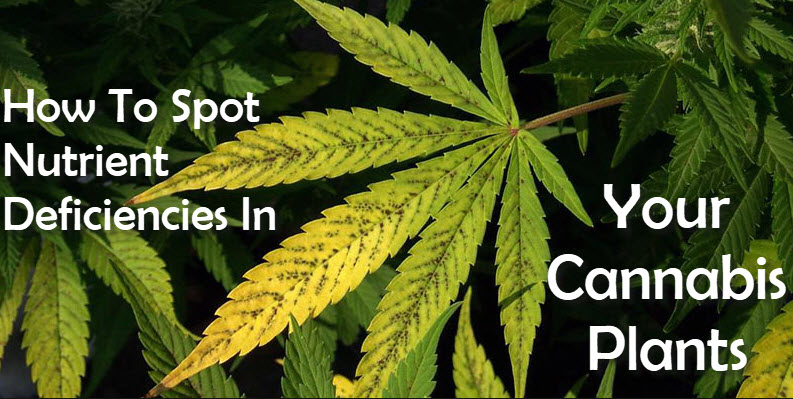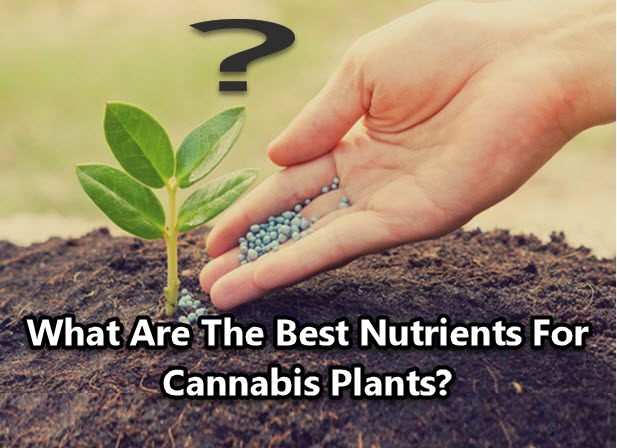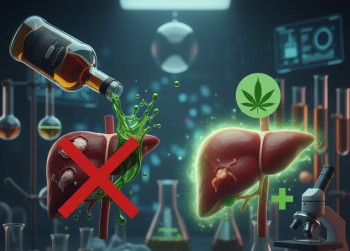Nutrient Deficiencies in Marijuana Plants: 10 Tips to Solve Them

When it comes to the health of cannabis, the importance of nutrients cannot be overemphasized. The inadequate supply of nutrients leads to deficiency problems that affect the health and yield of the plant. Just as is seen in all plants, the deficiency of necessary nutrients that are necessary for growth and development causes some signs across the leaves. These signs in cannabis plants include discoloration of leaves, curled leaves, dry leaves, and so on.
In this article, we'll go into the details of the role major nutrients play in the optimal development of cannabis plants, common nutrients deficiencies that affects cannabis plants and most importantly techniques and methods of solving these deficiencies.
Plant Nutrients
Plant nutrients necessary for the health and proper functioning of the plant can be divided into two namely macronutrients and micronutrients. Macronutrients refer to the nutrients needed by the plants in large amounts. These nutrients are paramount to the normal functioning of the plant and examples of macronutrients include nitrogen, phosphorus, and potassium. Micronutrients refer to the nutrients needed by the plants in small amounts. The fact that micronutrients are needed in small quantities doesn’t negate their importance to the health of the cannabis plant. Examples of micronutrients include iron, zinc, sulfur, and boron.
Plants nutrients can also be classified into mobile and immobile nutrients. Mobile plant nutrients can be regarded as plant nutrients that are transported throughout the plant to areas where they are needed the most. Examples of mobile nutrients include potassium, nitrogen, phosphorus, and magnesium as they can be transported from older leaves to newer leaves when needed. Immobile plant nutrients on the other hand refer to stationary nutrients that cannot be distributed to other plant areas even when needed. Examples of immobile plant nutrients include zinc, calcium, sulfur, and iron.
Specific Plant Nutrients
Nitrogen: Nitrogen is one of the macronutrients that are very important for the normal functioning of the cannabis plant. It is important for the formation of proteins within the plants and also for photosynthesis. Deficiencies of nitrogen in cannabis plants are characterized by yellowing of older leaves, falling away of leaves, and discoloration of plants.
Phosphorus: Phosphorus like nitrogen is a macronutrient necessary for photosynthesis, protein synthesis, and the formation of DNA. Signs of deficiency of phosphorus in cannabis plants include dry leaves and brown spots on the leaves.
Potassium: This is also a macronutrient that helps for photosynthetic processes and also helps to regulate the uptake of carbon dioxide. The signs of potassium deficiency in cannabis plants include brown and yellow leaf tips, curled leaves, and stretching.
Calcium: Calcium is an important nutrient within the cannabis plant which helps in the buildup of the cell walls that make up the plant helping to maintain rigidity and shape. Signs of deficiency of calcium is characterized by new growth at the root tips.
Sulfur: Sulphur is an example of micronutrients that are important to the growth and development of the cannabis plant. The deficiency of sulfur is characterized by the yellowing of new growth and the discoloration of the undersides of leaves.
There are a host of other beneficial nutrients such as boron, zinc, iron, molybdenum, and copper.
Tips to solve nutrient deficiency problems
Compost Tea: Compost tea is an important additive that can be added to help deal with numerous nutrient deficiency problems in cannabis plants. It contains numerous beneficial microbes and micronutrients which play the role of improving the immune system of the cannabis plant. Compost tea is added to the soil to enhance the soil and can easily be introduced to correct nutrient deficiency problems in cannabis plants.
Cal-Mag: The name already gives away what Cal-Mag brings to the table in terms of dealing with nutrient deficiencies in cannabis plants. It helps to impart calcium and magnesium which are important micronutrients in cannabis plants. For cannabis plants with weakened stems and branches and the presence of new growth at the tips of the roots, Cal-Mag helps to solve the nutrient deficiency problem.
Fish meal and Fish emulsion: Fish emulsion refers to the liquid remnant of fish that has been pressed for oil while fish meal refers to the powdered inedible parts of the fish. Fish meal and fish emulsion help to correct nutrient deficiency problems by introducing a good number of macronutrients like nitrogen and sufficient micronutrients to enhance the quality of the soil.
Guano: This is a special type of fertilizer which gotten from the feces and urine of bats and seabirds. Guano is an effective type of fertilizer that has a good concentration of nitrogen, phosphorus, and salts important for the development of the plant. When used as a foliar spray, guano helps to activate the soil and it has a less pungent odor when compared to other fertilizers.
Kelp: The addition of kelp which is basically seaweed can help to solve potassium and calcium deficiencies. Liquid kelp concentrates can be added early in the morning to help introduce a balance of necessary nutrients and acids to the growing medium.
Lime: Lime is added to the cannabis grow medium to deal with calcium and magnesium deficiency. It serves the purpose of increase the alkalinity of the soil when it is too acidic. Lime should not be used alongside fertilizer as they will both counteract each other.
Urea: This helps to introduce nitrogen to the growing medium in cases of nitrogen deficiencies. It is readily available for purchase with directions for use. It releases ammonium compounds to the soil thereby enhancing the soil.
Epsom salts: These play the beneficial role of introducing magnesium and sulfur to the grow medium in cases of deficiencies. They are mixed with the soil to help increase the magnesium and sulfate levels within the soil.
Zinc salts: These play the beneficial role of adding zinc in case of deficiencies which is important for the production of chlorophyll which plays a huge role in photosynthesis.
Mycorrhizae: This is an example of a nitrogen-fixing bacteria which can be added to the growing medium to ensure that nitrogen is not deficient in the growing process. It also helps the root as an extension to help in the uptake of water and nutrients to the root.
A smart canna grower shouldn't take the health of their cannabis plants lightly. Healthy plants are what gives bountiful harvest. Get your plants the needed nutrients, supply them with adequate water and watch them flourish.
CANNABIS PLANTS AND NUTRIENTS, READ THESE...
HOW TO SPOT NUTIENT PROBLEMS IN YOUR CANNABIS PLANTS!
OR..
BEST NUTRIENTS FOR YOUR CANNABIS PLANTS, READ THIS!







